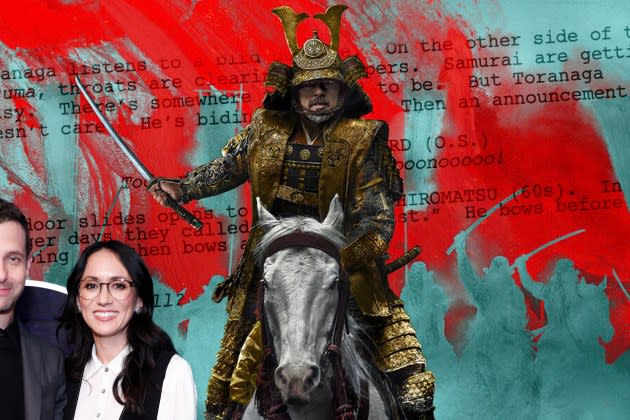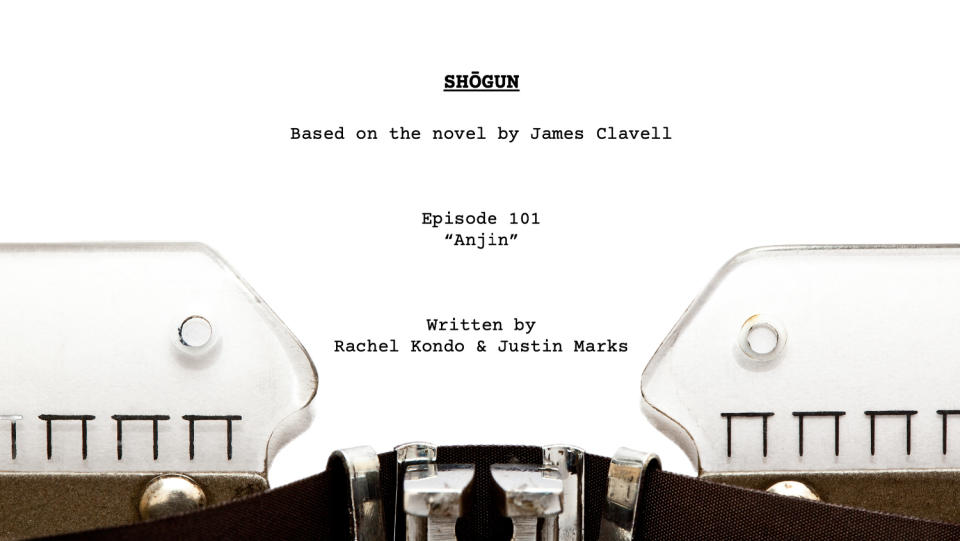It Starts On The Page: Read ‘Shōgun’ Premiere Script “Anjin” By Rachel Kondo & Justin Marks

Editor’s note: Shōgun was originally selected for Deadline’s showcase of standout limited or anthology series scripts in 2024 Emmy contention. Following the show’s renewal and subsequent move to drama categories, it is no longer part of that series.
Months after Shōgun had been greenlighted, it was headed towards production and actively casting when FX pressed the breaks, with Chairman John Landgraf telling Deadline at the time, “We need to slow down, and we’ve got to aim higher.”
More from Deadline
It Starts On The Page: Read 'Baby Reindeer' Episode 4 Script By Richard Gadd
It Starts On The Page: Read 'The Regime' Finale Script "Don't Yet Rejoice" By Will Tracy
The series was re-built from scratch with new writers, husband-and-wife duo Rachel Kondo and Justin Marks. FX’s most ambitions production to date, Shōgun has been a ratings hit and has been well received by critics and fans, even getting enthusiastic thumbs-up by George R.R. Martin who called it a “superb” adaptation of the 1975 book by James Clavell while admitting that he also loved the “landmark” 1980 miniseries.
In the forward to their Episode 1 script, Kondo and Marks explain why they took on a famous book that already had been made into a classic TV series. They also reveal why “translation” is the main theme of their script “Anjin,” titled after the Japanese word for pilot and nickname of Englishman John Blackthorne (Cosmo Jarvis).
Blackthorne’s ship getting marooned in a Japanese fishing village owned by Lord Yoshii Toranaga (Hiroyuki Sanada) in Episode 1, directed by Jonathan van Tulleken, starts a chain of events that influence a major power struggle in 1600 Japan and marks the beginning of a tragic love story.
Shōgun started with one question: why?
When the idea of adapting James Clavell’s mega-novel SHŌGUN surfaced in our lives, neither of us was more than vaguely familiar with the story. Generationally-speaking, both the iconic book and the 1980 miniseries had missed us. But they’d had a seismic impact on American culture. And so it left us wondering… did anyone really need to revisit this story? Was there anything new to say about a white guy wearing Japanese clothing, searching for his place in a world where he didn’t belong? Or had the moment passed and was SHŌGUN now a relic, admirable for what it had been?
The answer to all these questions was yes.
Yes, it might be a relic. But it’s also timeless, classic in every sense. And yes… this story needs to be told again, today more than ever. Because it’s about how we encounter another culture, and how we encounter ourselves when faced with what we can’t understand. It’s a story about the fallacy of translation… how we can never fully reconcile the tragic gaps in language and culture, though we dare not stop trying.
We like to say that the first episode of a television series should teach your audience how to watch it. For us, the first chapter of SHŌGUN was about translation. Not just from the page to the screen, or from the values of 1975 to the values of today… we mean the actual act of placing yourself between two cultures. Words matter – especially when they stand between you and everyone else, when your only chance at bridging that gap is in what you say or don’t say.
From the moment John Blackthorne washes ashore in Japan, we wanted to show what can happen when words matter to this degree. How every choice he makes – be it a sentence, idea, omission, or embellishment – when filtered through a different experience, becomes his chance to rise or fall, to love or lose, even to live or die.
We hope anyone who’s watched this first chapter of this epic saga might sense the care, and hopefully the honesty, that went in to examining the questions James Clavell first raised in the 1970s. Like us, you might find them worthy of always asking, of never not-asking, both of ourselves and the world around us. In fifty years, it’ll be another generation’s turn to dust off the cobwebs of our modern experience. Maybe they’ll look at our answers and see what we got wrong. We should all be so lucky…
Click below to read the script.
Best of Deadline
Sign up for Deadline's Newsletter. For the latest news, follow us on Facebook, Twitter, and Instagram.

 Yahoo News
Yahoo News 

